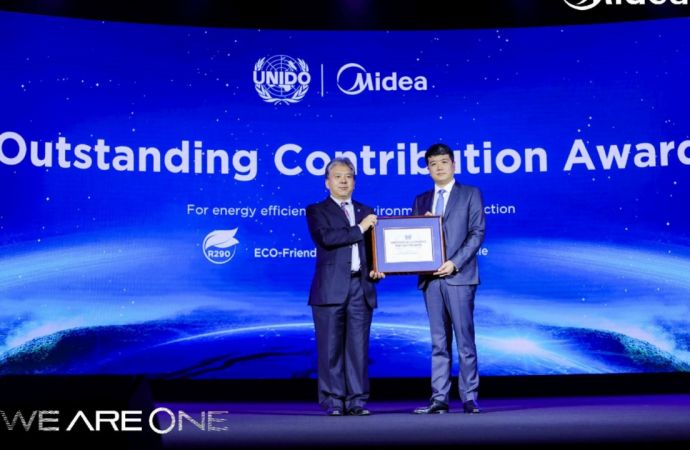A new report highlights key recommendations to increase the use of air-conditioning in India using R290.
_1525082892.jpg)
A report published this month – by the Indian Energy and Resources Institute (teri), the Natural Resources Defense Council (NRDC) and the Institute for Governance & Sustainable Development (IGDSD) – purports to provide a guide to how India can improve its use of air-conditioning in a sustainable and energy efficient way. The use of R290 appears as a key recommendation.
“Keeping cool in India is not just a matter of comfort”, Frances Beinecke from the NRDC explains, “It's a matter of life and death. This report offers key strategies to transform the air conditioning market to tackle global climate change while providing much needed cooling to billions. The market for air conditioners is growing fast in South Asia and this type of smart planning is crucial to our future.”
The report, called ‘Improving Air-conditioners in India’, notes is that the South Asian country already has R290 hydrocarbon-based split-AC available.
However, market penetration remains low with just 2% of 2017 estimated room AC (RAC) sales in India using R290. Still today, RAC units with R-22, a HCFC with a GWP 1760 and a small ODP, make up around 70% of sales.
The Kigali Amendment that calls for a global phase-down of HFCs “will likely require most countries to eventually use the lowest-GWP refrigerants available, such as HC-290 (propane), with its much lower GWP of 3”, the report notes.
HC-290 is replacing HCFC-22 in the market. Hundreds of thousands of room ACs using HC-290 have been sold in India."
– Improving Air-conditioners in India report
The report notes that the HFC blend R32, with its GWP of 677, remains a limited alternative as it will also eventually be subject to Kigali.
Though R290 remains flammable and training is needed to make India ready to use this natural refrigerant. “HC-290 is replacing HCFC-22 in the market. Hundreds of thousands of room ACs using HC-290 have been sold in India, including the highest efficiency room ACs, and it has low GWP”, the report notes.
R290 is also known for its energy efficiency. “HC-290, another climate-friendly refrigerant used in India, was compared to HCFC-22, and demonstrated a 7 to 8% energy efficiency benefit over HCFC-22 at 52°C and55°C, respectively”, the report explains.
Godrej Appliances, for example, is mainly using HC-290 for government projects and has “the most energy efficient room AC in India – a 5.8 ISEER [a seasonal efficiency ratio that is certified by the Indian government] 1-ton room AC, with the highest efficiency already at ISEER 6.15 as of April 2018”.
The report highlights that having minimum standards on the market of ISEER above 4.0 will mean that more energy efficient air-conditioners using low-GWP refrigerants like R290 will also be placed on the market.
The importance of labelling & standards
The Indian Bureau of Energy Efficiency Star Labelling program is already strengthening AC efficiency standards and labels every year.
The report also advocates making customers aware of energy efficiency labels and the GWP of the refrigerant in the system could further increase the use of sustainable and energy efficient AC.
Bulk programmes have also been used in India to reduce the price of energy efficient and more environmentally friendly air-conditioners. One joint venture by the Energy Efficiency Services Limited (EESL), a joint venture of India’s Ministry of Power and several government owned companies, bought 10,000 R290 ACs with an ISEER of 5.2 from Godrej.
The report notes the R290 RACs are still more expensive than standard HFC-based units, which constitutes an important barrier.
One key way of helping increase the price reduction of R290 ACs may be to increase the energy efficiency requirements and lower the GWP requirement. “Looking forward to future tenders, several manufacturers have expressed hope that EESL will steadily increase the minimum ISEER requirement beyond ISEER 5.2 and include a lower-GWP refrigerant requirement”, the report notes.
It also thinks manufacturers of R290 system could outsource compressors, heat exchangers and other components to other Indian company’s meaning a lower cost for production purposes.
Related stories



